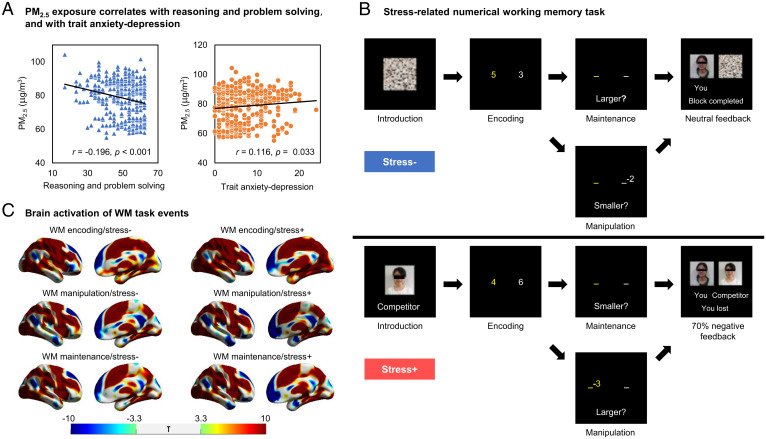Fig. 1.
Cognitive and emotional behavioral tasks. (A) Correlations between PM2.5 exposure and poorer reasoning and problem solving (blue, n = 352) and higher trait anxiety/depression (orange). (B) WM task across stress contexts: In stress+ trials, subjects were shown their photograph alongside that of a similar age and sex competitor. Feedback at the end of each WM maintenance or manipulation task was such that the competitor tended to perform better (“You lost” 70% of the time versus “You won”). In the stress− trials, a scrambled competitor image was shown instead, and no relative performance feedback was provided. In the WM tasks, subjects first encoded a pair of numbers that they maintained or manipulated in WM. In the maintenance task, they then responded to a probe as to which number was larger or smaller. In the manipulation task, they performed a subtraction of 2 or 3 from one number before responding to a probe as to which result was larger or smaller. (C) Brain activation engaged by the WM tasks with lateral and medial views of right hemisphere (n = 352, P < 0.05 family-wise error corrected at the whole-brain voxel level). Color bars: green to blue denotes deactivation T-values, while green to red denotes activation T-values.

